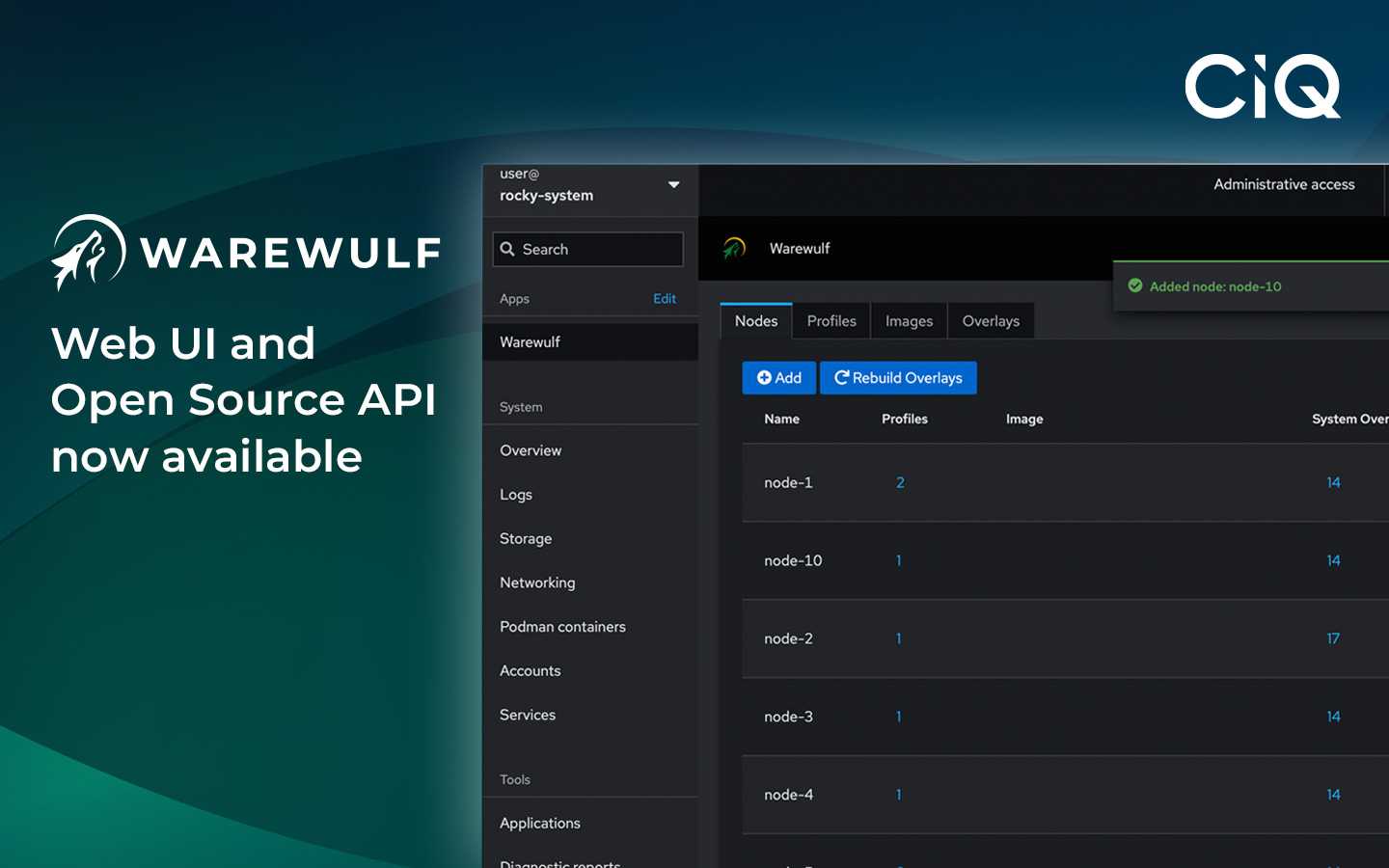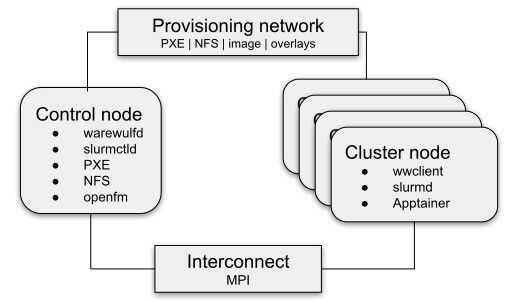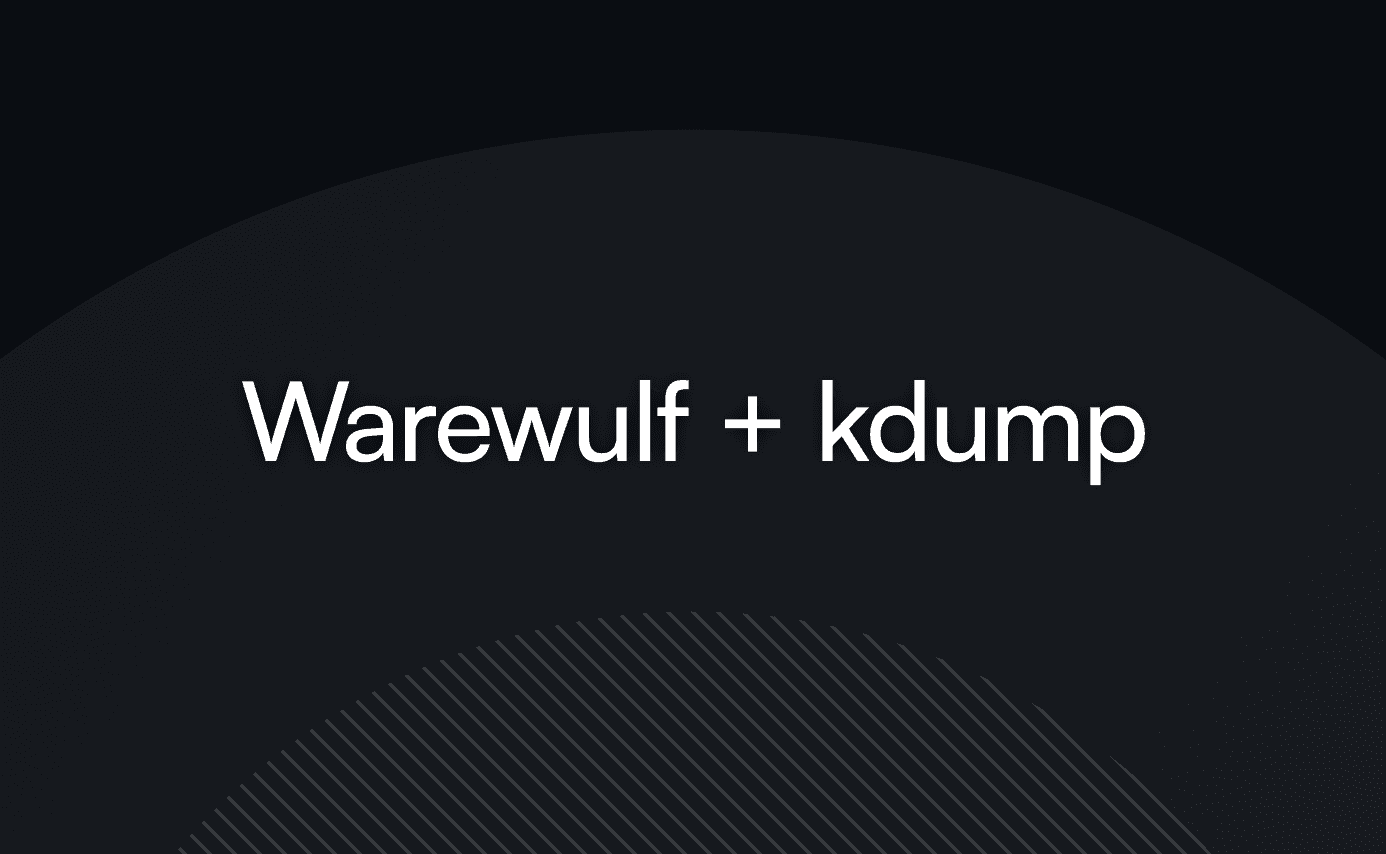3 min read
Helping Warewulf shine: a new web interface for cluster management

Warewulf, the open source cluster provisioning system, is in its fourth major release since its creation in 2001. It has become a foundational component of the HPC stack, even being included in the original OpenHPC 1.0 release. The development and user community for Warewulf v4 is active and strong, with over 500 stars on its main GitHub repository and almost as many people in its Slack. Warewulf’s commitment to the HPC community is core to its identity, and is the foundation for its strength and longevity.
A common request
We want to make sure Warewulf is usable and approachable for as many people as possible. We think Warewulf strikes a perfect balance of opinionated and flexible, giving you just enough of a framework to point you in the right direction without tying your hands for how you want to build and manage your own infrastructure. But time and time again we are asked: “Does Warewulf have a web interface?”
While seasoned cluster administrators might scoff at the question, a web interface can serve as an on-ramp for new administrators, or for experienced administrators becoming familiar with a new platform. Like it or not, it also often serves as a sentinel for overall platform maturity.
A web interface for Warewulf
Over the past few months, we at CIQ have been busy building a web interface for Warewulf. Our priorities are the same as in the community project: integrate well with others tools, make opinionated recommendations, and don’t get in the way.
To this end, we’ve built the web interface as an add-on page for Cockpit: an existing, well-supported, general-purpose administrative web interface that’s already included with Rocky Linux. We integrate with Warewulf using a new REST interface, which CIQ contributed to the community project and which is now available in the v4.6.1 release.
Tech Preview now available
It’s early days yet, but the web interface is now available in tech preview direct from CIQ. We’re focused on four core areas of functionality:
- Manage the nodes in your cluster
- Manage configuration profiles to group nodes into logical sets
- Import and manage node images, and assign them to your nodes and profiles
- Manage and inspect configuration overlays, including in-browser previews of how individual overlay templates will be rendered to cluster nodes
We want the web interface to be more than just a coat of paint: we want it to add real value to the product. So we’ve populated it with discoverable help text throughout, to define terms and point administrators in the right direction, whether they’re new to Warewulf or just learning about a new feature.
And because it’s integrated with Cockpit, you’re never more than a tab away from a fully-functional in-browser terminal that you can use to access any advanced functionality that isn’t yet available in the primary web interface.
Looking to the future
We expect this web interface to be a game-changer for Warewulf, making it more approachable for new admins, more appealing to cluster integrators, and more supportable from day one of a cluster’s life. Over time we will continue to add controls to this interface until 100% of Warewulf’s core functionality is represented. We will also add integrations for external image and overlay catalogs, further simplifying the deployment and management process, even in complex, mixed clusters.
Of course, we want to make sure that this interface improves usability for our customers, and we hope you’ll sign up for the tech preview so that we can direct our development effort towards what matters most to you. As we make improvements and add features to the interface, that development will go directly to preview participants until it is eventually made available as part of CIQ’s overall Warewulf experience.
If you’re already using Warewulf today, we hope you’ll let us know! We’d love to show you how CIQ can support and enhance you and your environment, whether it’s with Warewulf specifically, Rocky Linux more generally, or anything else in our ever-broadening HPC and Enterprise Linux portfolio.
Built for Scale. Chosen by the World’s Best.
1.4M+
Rocky Linux instances
Being used world wide
90%
Of fortune 100 companies
Use CIQ supported technologies
250k
Avg. monthly downloads
Rocky Linux





